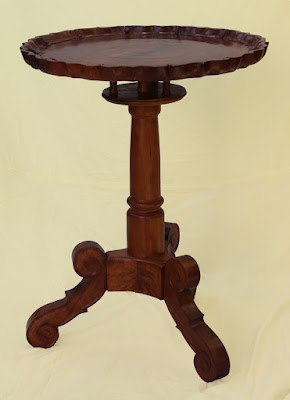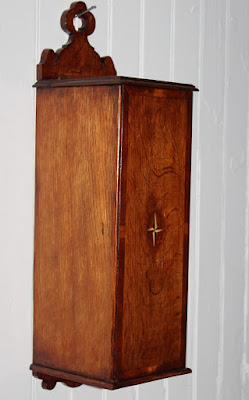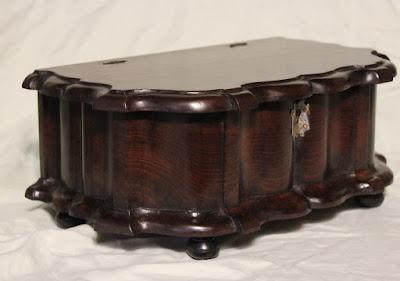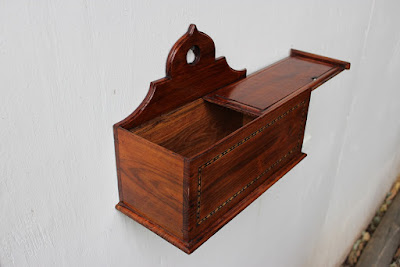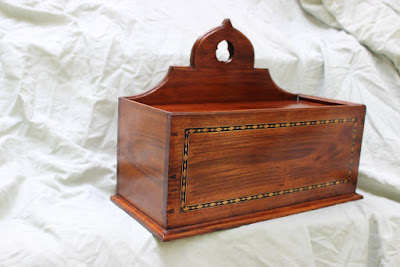| A bit of carving and some paint and you have a marble mantelpiece |
I did a post a few weeks ago about my dining room project, and said that there would be only one more post on the project; technically that is still true, because this post is not about the dining room, but only the fireplace in it. As with most things I have done for this client, the project expands as it goes, so what was originally to have been a ceiling medallion and a large oval moulding filling up the entire field, has morphed into a fairly substantial renovation of the entire room.
The first addition to the project was to "enhance" the mantle. Since they wanted to keep the fabric on the walls, I opted not to disturb the structural framework of the mantle. This meant to say that I had to design enhancements and alterations that would turn the "American Colonial" style fireplace into a "French Louis XVI" one. (this is not so difficult since both styles originate from the same time period and fall into the "neoclassical" style) I achieved this mostly by carving the curved posts for the front, to replace the original applied fluting strips. This pushed the overall depth of the mantle out, so it was necessary to make a new top. My friend Steffen from Meisterbuilders Inc made the top for me; I designed it with a bit of curved step-out to the front edge because a simple rectangle would have been just too boring.
| The original fireplace |
 |
| Partially dismantled mantel structure |
| Newly rebuilt and with the first stages of the faux finish |
I often have trouble remembering to take pictures, or forget the camera, or the card, or, in the case this time, the battery went flat and I kept forgetting to charge it for about a week; thus there are not more progress pictures.
The clients had wanted me to simply get some ornaments, gild them, and then apply them, but I explained to them that it would require some structural changes as well in order to achieve a look that would suit their vision for the room. I did use applied ornaments, however; these are not things that I made this time.. I bough ready made compo ornaments, and then used gold leaf and paint to give them the look of ormolu mounts.
Actually, I am still very much a novice with the gilding thing, as I had only done one small frame before this project. I still have not actually tried the "water gilding" process. The process used on this project is called "oil gilding", and is accomplished by brushing on a "sizing" to the surface, and then applying the leaf once the oil has dried to a tacky finish. This client does not like things to look too bright and polished so I developed a method of applying the leaf to most of the surface and then painting the rest with a gold paint. This serves as a "glaze" over the whole surface and reduces the brightness but still allows the metal surface to show; the red primer and gold paint look darker by contrast, giving it a sort of "antiqued" look. I did not take pictures of the process whilst doing the ornaments for the mantel but here are a couple pictures which show the stages on some plaster ornaments which will go over the mirror that incorporate the same method.
| Here you can see unfinished plaster, plaster with red oxide undercoat, and another object which has been (mostly) leafed |
| Another festoon with gold paint applied over the leaf |
In planning these modifications to the mantel, I suggested to them that we do the it in a faux marble finish as opposed to simply using the ivory white of the rest of the room. I was happy when they agreed to that, because I really enjoyed doing the marble panels in the passage and foyer and wanted to try to create something even more convincing this time. (I always strive to make each new project better than the last) Just as I was finishing up the painting a representative from a design/build firm was in the house asking me about the my previous faux marble work; I mentioned to him that I had just finished painting the mantle and he was surprised. "oh", he said, "I thought that was real marble" I guess I achieved to some degree, at least, what I was after.
| View of the mantel shelf (I have also made and gilded the mirror frame, but that is a topic for the last post on the dining room project as a whole) |
 |
| An antique French marble mantel which was my inspiration for this project I did not try to copy the colour because the client thought the veins were too dark. (picture from the "web") |
| The completed mantel |
Anyone paying attention will also notice that the fireplace surround and the hearth have been replaced. I could have done a simple slab like the black granite which I removed, but that would have been way to pedestrian for me. I was so happy to find the perfect pink marble to compliment the room. What I did not realise was how difficult finding nice pure white marble would be, but obviously, I succeeded, those bits are not faux anything.
| My job is a lot of fun! |























